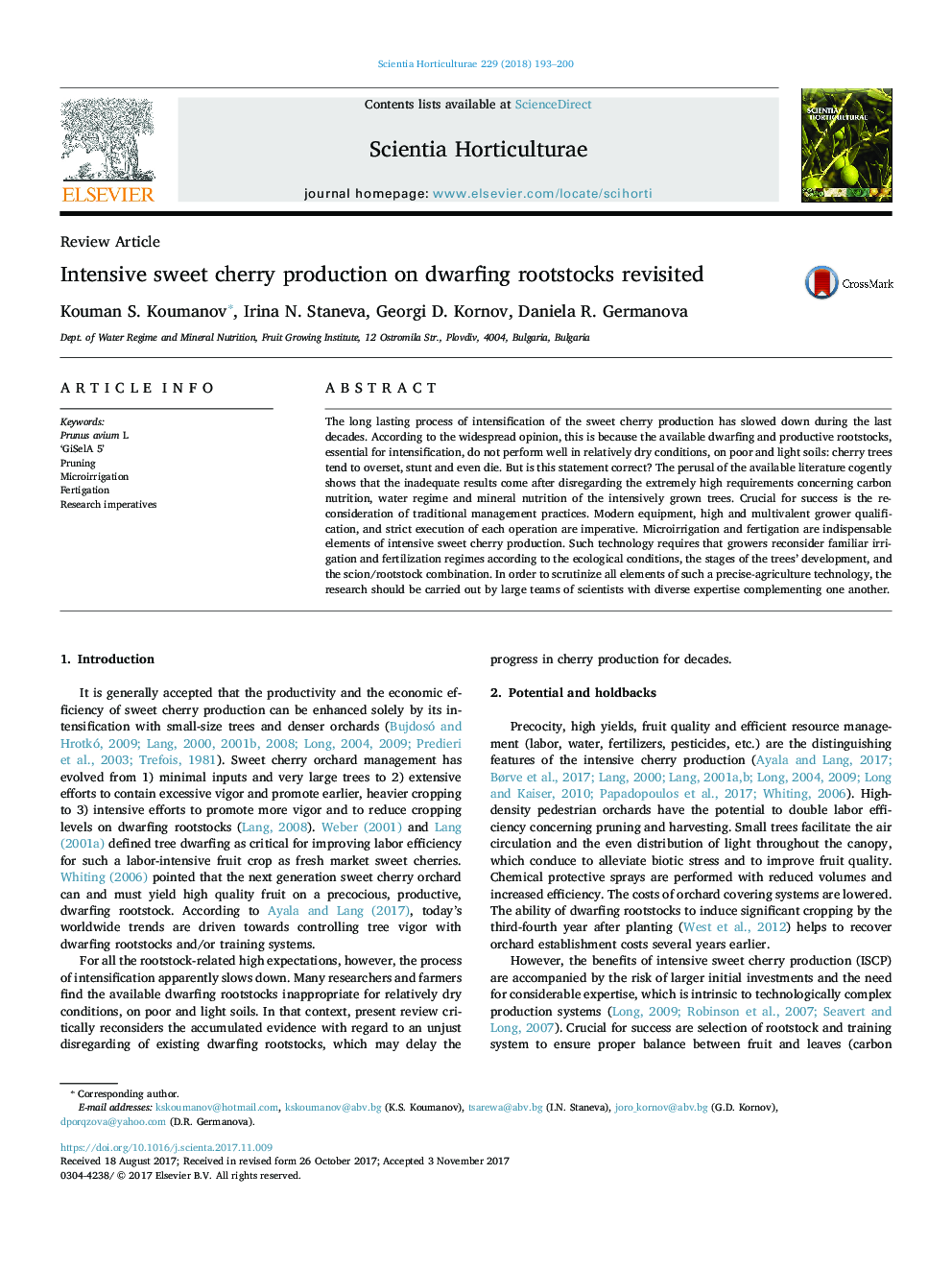| Article ID | Journal | Published Year | Pages | File Type |
|---|---|---|---|---|
| 8893094 | Scientia Horticulturae | 2018 | 8 Pages |
Abstract
The long lasting process of intensification of the sweet cherry production has slowed down during the last decades. According to the widespread opinion, this is because the available dwarfing and productive rootstocks, essential for intensification, do not perform well in relatively dry conditions, on poor and light soils: cherry trees tend to overset, stunt and even die. But is this statement correct? The perusal of the available literature cogently shows that the inadequate results come after disregarding the extremely high requirements concerning carbon nutrition, water regime and mineral nutrition of the intensively grown trees. Crucial for success is the reconsideration of traditional management practices. Modern equipment, high and multivalent grower qualification, and strict execution of each operation are imperative. Microirrigation and fertigation are indispensable elements of intensive sweet cherry production. Such technology requires that growers reconsider familiar irrigation and fertilization regimes according to the ecological conditions, the stages of the trees' development, and the scion/rootstock combination. In order to scrutinize all elements of such a precise-agriculture technology, the research should be carried out by large teams of scientists with diverse expertise complementing one another.
Keywords
Related Topics
Life Sciences
Agricultural and Biological Sciences
Horticulture
Authors
Kouman S. Koumanov, Irina N. Staneva, Georgi D. Kornov, Daniela R. Germanova,
